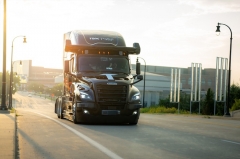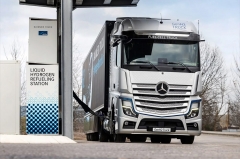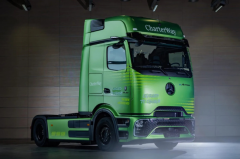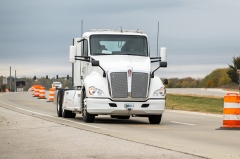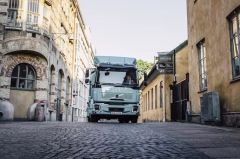
If it sounds like Daimler Truck is doing a lot, that’s because it is. Daimler Truck laid out a clear roadmap for the next few years during its 2025 Capital Market Day, which was held at its Cleveland, North Carolina truck plant.
One of the biggest targets Daimler Truck shared is its goal to hit more than 12 percent adjusted return on sales (ROS) in its industrial business by 2030. To help support that, they also announced a share buyback plan worth up to €2 billion that’s expected to start in the second half of 2025. The company will also stick to its current dividend policy, which pays out 40 to 60 percent of net profit to shareholders.

The company’s updated strategy is built on five main areas: growing through scale and efficiency (including the recent Fuso-Hino merger deal), improving customer services, balancing investment between diesel and clean-energy trucks, cutting costs (especially in Europe), and building a more accountable company culture.
Daimler Truck’s CFO said the focus moving forward is on better cost management, growing service revenue, and smarter investments, all meant to boost cash flow by 50 percent and help meet that 12 percent profit target by 2030. The company also expects to grow yearly revenue by 3 to 5 percent through services, EVs in Europe, trucks in India, and the defense sector. They’re targeting a 40 to 50 percent return on capital employed (ROCE) by the end of the decade. As part of the cost cuts, Daimler Truck launched a program called “Cost Down Europe,” which aims to save over €1 billion in the region by 2030, which includes changing production to more affordable countries and cutting jobs in Germany through early retirement and other programs.

In terms of tech, Daimler Truck is adjusting its powertrain plans depending on market speed. In the U.S., where EV truck sales are slower than expected, the company is holding back on zero-emission platform investments. Instead, they’ll continue investing in diesel for now and focus on EVs and hydrogen trucks in Europe. The mass production of hydrogen-powered trucks is now expected to move to the early 2030s, as charging infrastructure is still limited.
Meanwhile, its joint venture with Volvo, Coretura, is working on a software-based truck platform to improve operations, lower costs, and allow updates without hardware changes. There’s more to see from Daimler, including Fuso models. Visit TruckDeal and use the Truck Guide to help you find the right truck for the job.


